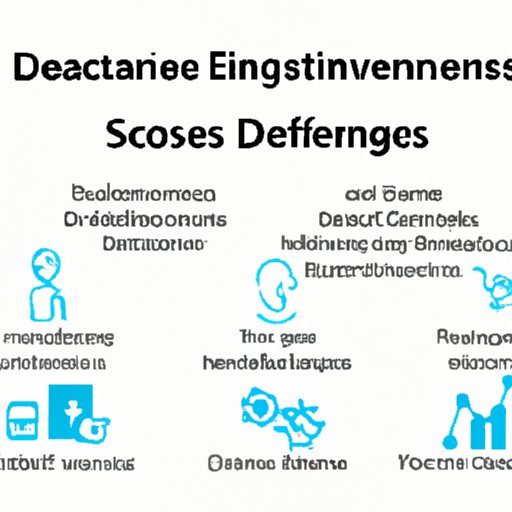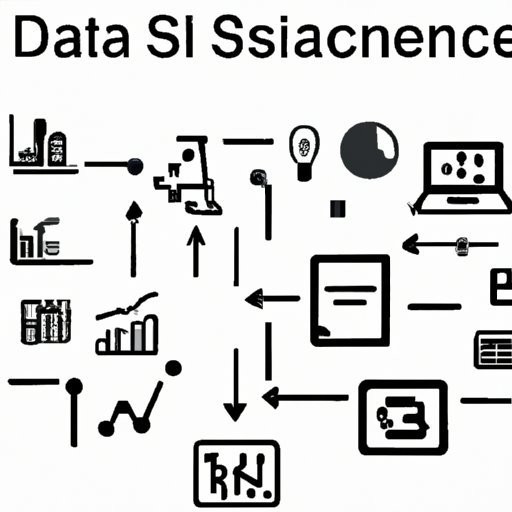Introduction
Data science is an interdisciplinary field that combines computer science, mathematics, statistics, and other related fields to analyze large datasets. It involves extracting insights from data, uncovering hidden patterns, and making predictions or recommendations based on the findings. Data science projects are used in many industries, such as healthcare, finance, marketing, and education, to make decisions and solve problems.
In this article, we’ll explore how to start a data science project. We’ll cover the steps involved in starting a data science project, the key challenges to overcome, and the potential benefits of data science projects.
Outlining the Steps Involved in Starting a Data Science Project
Before you can begin your data science project, there are several steps you need to take. These steps involve identifying the necessary resources and tools, developing a data science project plan, choosing the right data science tool, gathering relevant data, setting up your environment, analyzing and interpreting the data, and communicating the results. Let’s take a closer look at each step.
Identify the Necessary Resources and Tools
The first step in any data science project is to identify the necessary resources and tools. This includes hardware (e.g. computers, servers, storage), software (e.g. programming language, analytics tools), and personnel (e.g. data scientists, developers). Knowing what resources and tools you need upfront will help you determine the scope of your project and develop a realistic timeline.
Develop a Data Science Project Plan
Once you have identified the necessary resources and tools, the next step is to develop a data science project plan. This plan should include a timeline for completing the project, milestones for tracking progress, and a budget for the project. A detailed project plan will help ensure that the project is completed on time and within budget.
Choose a Data Science Tool
Once you have developed a project plan, the next step is to choose a data science tool. There are many different data science tools available, including open source tools such as R and Python, cloud-based tools such as Amazon Web Services and Microsoft Azure, and proprietary tools such as SAS and SPSS. Each tool has its own strengths and weaknesses, so it’s important to choose the right one for your project.
Gather Relevant Data
Once you have chosen a data science tool, the next step is to gather relevant data. This can involve collecting data from internal sources (e.g. customer databases, sales records) or external sources (e.g. government databases, public datasets). It’s important to ensure that the data is accurate and up to date.
Set Up Your Environment
After gathering the necessary data, the next step is to set up your environment. This involves installing the appropriate software, configuring the data science tool, and creating the necessary databases. Setting up the environment correctly is essential for ensuring that the project runs smoothly.
Analyze and Interpret the Data
Once the environment is set up, the next step is to analyze and interpret the data. This involves using statistical techniques to identify patterns and relationships in the data. It’s important to understand the results and draw meaningful conclusions from them.
Communicate Results
The final step in starting a data science project is to communicate the results. This involves presenting the findings in a clear and concise manner, either through reports, presentations, or visualizations. It’s important to ensure that the results are easy to understand and actionable.

Key Challenges to Overcome When Starting a Data Science Project
Although there are many steps involved in starting a data science project, there are also several key challenges to overcome. These challenges include understanding the problem, accessing and cleaning data, choosing the right algorithms, and handling bias. Let’s take a closer look at each challenge.
Understanding the Problem
The first challenge is understanding the problem. This involves determining the objectives of the project and understanding the data that is available. It’s important to have a clear understanding of the problem before attempting to solve it.
Accessing and Cleaning Data
The second challenge is accessing and cleaning the data. This involves gathering the necessary data from internal and external sources and then cleaning it to remove any errors or inconsistencies. Cleaning the data is essential for ensuring accurate results.
Choosing the Right Algorithms
The third challenge is choosing the right algorithms. Different algorithms have different strengths and weaknesses, so it’s important to choose the right ones for the project. This can involve researching and testing different algorithms to determine which ones are best suited for the task.
Handling Bias
The fourth challenge is handling bias. Bias can occur when certain groups are underrepresented in the data. It’s important to identify and address any potential biases in the data to ensure accuracy.
Conclusion
Starting a data science project can be daunting, but with the right resources and tools, it will become easier. The steps involved in starting a data science project include identifying the necessary resources and tools, developing a data science project plan, choosing the right data science tool, gathering relevant data, setting up your environment, analyzing and interpreting the data, and communicating the results. There are also several key challenges to overcome, such as understanding the problem, accessing and cleaning data, choosing the right algorithms, and handling bias. With the right approach, data science projects can provide valuable insights and help organizations make better decisions.
(Note: Is this article not meeting your expectations? Do you have knowledge or insights to share? Unlock new opportunities and expand your reach by joining our authors team. Click Registration to join us and share your expertise with our readers.)
